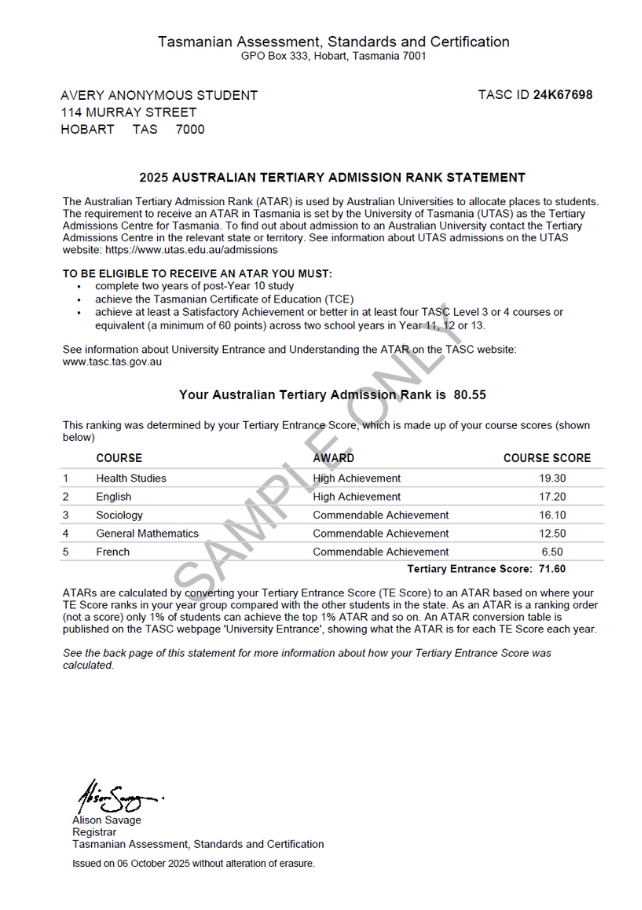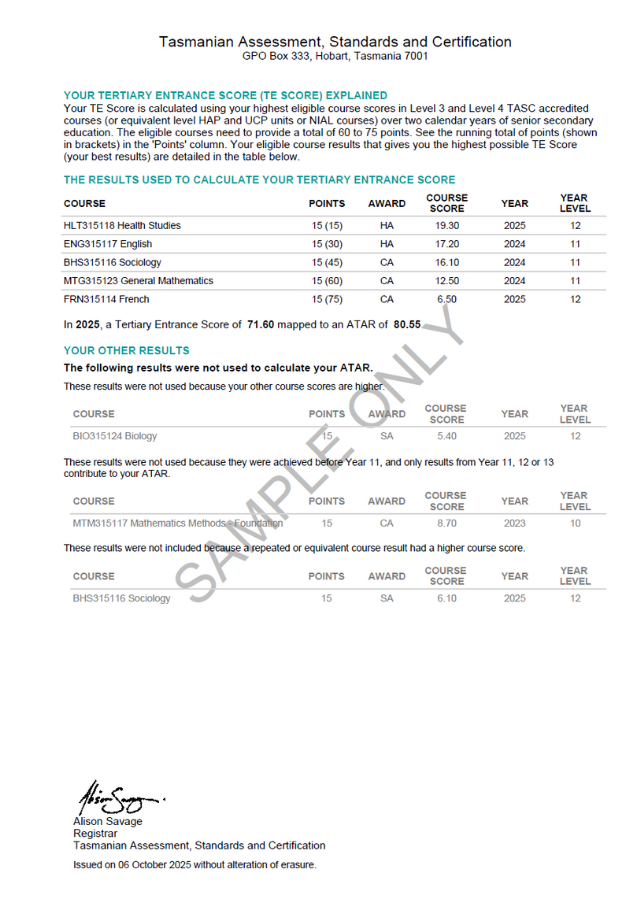The University of Tasmania operates Tasmania’s Tertiary Admissions Centre for university entrance. Under an agreement, TASC supports the calculation of the Australian Tertiary Admission Rank (ATAR) for eligible Tasmanian students and issues eligible students with an ATAR Statement at the end of their Year 12/13 school year.
An ATAR is one of many ways to enter university, with pathways available for students at and recently completing their school years, mature-age students and non-school leavers.



